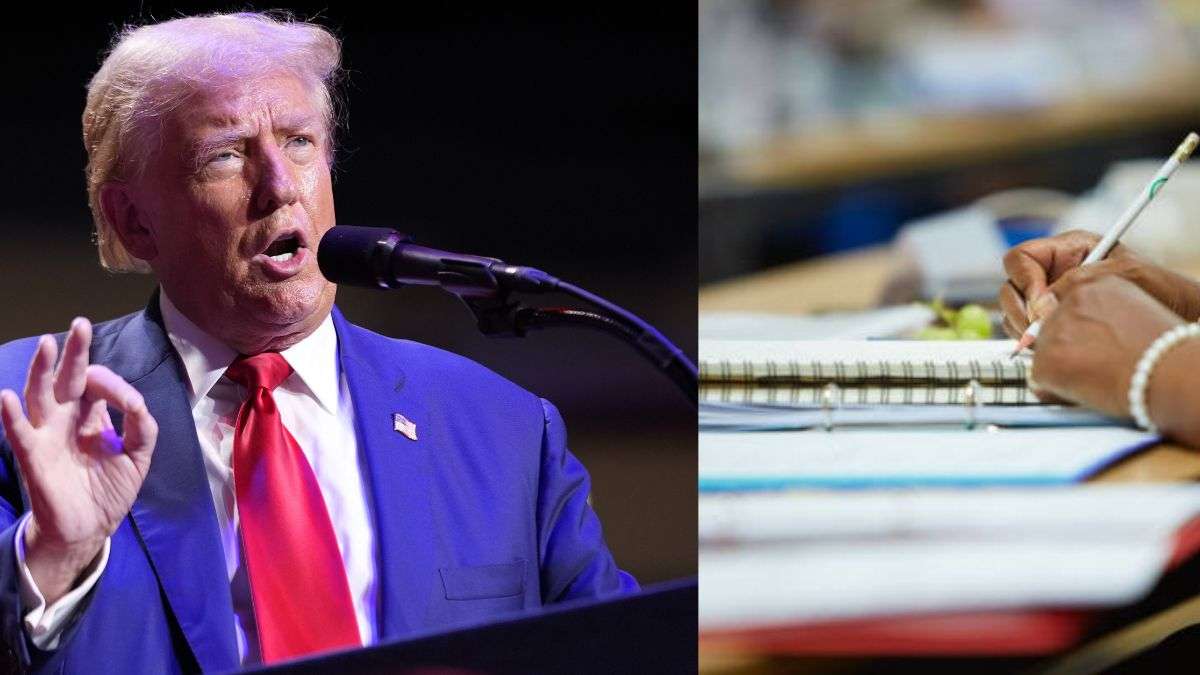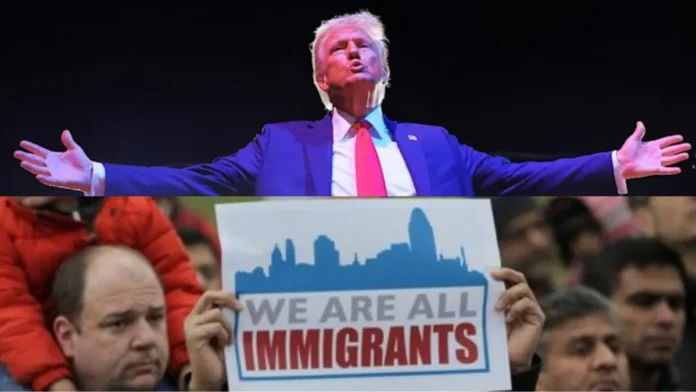The Unsettling Move to Reshape Birthright Citizenship.
With his recent re-election bid, former President Donald Trump has proposed an executive order aimed at ending birthright citizenship for children born in the United States to non-citizen parents. This highly controversial move targets not only children born to undocumented immigrants but also, as the proposed draft indicates, children of individuals on lawful visas, including H-1B holders. For the Indian immigrant community in particular, already beleaguered by decades-long green card backlogs, this proposal has ignited deep concerns about the future security and stability of their families.
According to a draft of the executive order, federal agencies would be required to deny automatic U.S. citizenship to children born on American soil unless at least one parent holds U.S. citizenship or lawful permanent residency. This measure would fundamentally reinterpret the 14th Amendment, which currently guarantees birthright citizenship, leading many legal experts to predict a fierce legal battle in the courts. However, the prospect of litigation offers little solace to immigrants who find themselves increasingly uncertain about their place in America.
Challenging the Constitution: A High-Stakes Gamble.
The 14th Amendment, ratified in 1868, remains one of the bedrock principles of American civil rights, declaring that “All persons born or naturalized in the United States, and subject to the jurisdiction thereof, are citizens of the United States.” Historically, this clause has been interpreted broadly to include nearly all children born on U.S. soil, regardless of their parents’ immigration status. This principle was upheld in the landmark 1898 Supreme Court decision United States v. Wong Kim Art, where the court affirmed that birthright citizenship applied even to the children of foreign nationals.
Trump’s proposal seeks to challenge this century-old interpretation, zeroing in on the phrase “subject to the jurisdiction thereof” as grounds for excluding children of non-citizen parents. By doing so, he aims to restrict citizenship rights to those children with a clear and legal familial connection to the United States. Many legal experts, however, argue that this interpretation misreads the 14th Amendment and fails to take into account the long-standing judicial precedents supporting an inclusive view of citizenship.
While legal analysts anticipate that the Supreme Court would likely uphold birthright citizenship for children of lawful residents, as it has in the past, the uncertainty is nerve-wracking for many immigrants. Indian families, who often wait decades for green cards due to restrictive quotas and caps, face an added layer of insecurity with the prospect of their U.S.-born children being denied citizenship—a privilege that has, until now, been a rare comfort amid an otherwise grueling immigration process.

A Deep Impact on Indian Nationals.
The fallout from Trump’s proposed executive order would be especially severe for Indian nationals, who form a large portion of H-1B visa holders in the United States. Many of these individuals have spent years navigating a cumbersome green card process plagued by backlogs. According to data from the Cato Institute, the wait time for an Indian national in the EB-2 and EB-3 skilled visa categories has now reached a staggering 134 years for those joining the queue today. This backlog has not only delayed the path to permanent residency for skilled Indian professionals but also created complications for their families, as children of H-1B holders must self-deport or seek alternative visas upon turning 21 if they do not hold U.S. citizenship.
Historically, birthright citizenship has served as a crucial relief for these families, ensuring that at least their children can avoid the immigration purgatory faced by their parents. The potential loss of this guarantee has sparked widespread anxiety, leading many to wonder whether they have a future in the United States. For some Indian professionals, this uncertainty could very well be the tipping point that drives them to consider relocating to countries with more predictable immigration policies, such as Canada or Australia, both of which have been aggressive in courting skilled immigrants in recent years.
Rajiv S. Khanna, an immigration attorney, describes Trump’s proposal as a “staggeringly cruel” policy that aims to strip away one of the few consolations available to immigrant families caught in the green card backlog. “For the thousands of Indian nationals on H-1B visas who are already enduring lengthy waits for permanent residency, Trump’s proposal is illogical. Many of these professionals dedicate their prime years to advancing America’s economy,” Khanna notes. “To deny their U.S.-born children citizenship adds an entirely unnecessary burden, pulling these families further into the relentless cycle of immigration issues.”
The Fear Factor: Creating Chaos in the Immigration System.
While the legality of Trump’s proposal remains questionable, many argue that the mere act of proposing such a measure serves a strategic purpose for the administration. By consistently challenging existing immigration norms, the Trump administration has, in the view of immigration advocates, sought to inject chaos and fear into the immigration system. This uncertainty discourages new immigrants from coming to the U.S. and potentially convinces existing immigrants to leave.
For the Indian community, Trump’s threats to end birthright citizenship bring back memories of the ongoing attempts to restrict H-1B visas and reduce immigration overall. “There is a palpable sense of fatigue and frustration among immigrants,” says Ashwin Sharma, another immigration attorney. “The constant policy changes, court challenges, and anti-immigration rhetoric have made it difficult for families to plan their lives.”
In the meantime, even as the courts are expected to strike down these proposals eventually, the anxiety created by them is immediate and widespread. Children who once took for granted their status as American citizens may now find themselves caught in legal limbo. For Indian nationals already facing monumental green card backlogs, this adds yet another layer of complexity to an already difficult situation. Many are left wondering if they will ever be able to fully settle down in the country they have come to call home.

The Road Ahead: Will the Courts Uphold Constitutional Protections?
The road ahead for Trump’s executive order, should he return to the presidency, is fraught with constitutional challenges. Experts believe the Supreme Court would likely reject a reinterpretation of the 14th Amendment that denies birthright citizenship to children of legal immigrants. However, with a conservative majority on the bench, there is always a slim chance that the court might choose to revisit the century-old interpretation of birthright citizenship in a way that aligns with Trump’s agenda.
Cyrus D. Mehta, an immigration attorney, points to historical cases like *Wong Kim Ark*, which firmly established birthright citizenship for children of foreign nationals. “For over a century, courts have consistently interpreted this clause to mean that all children born on U.S. soil are citizens, so long as their parents are within the bounds of U.S. law,” Mehta explains. “Documented migrants, like those on H-1B, L-1, and F-1 visas, clearly fall into this category.”
Regardless of the outcome, Trump’s proposal has created a lasting impact on the Indian immigrant community and other lawful immigrant groups. While the final decision rests in the hands of the judiciary, the anxiety and uncertainty generated by these policy proposals have already taken a toll on the immigrant experience in America.

